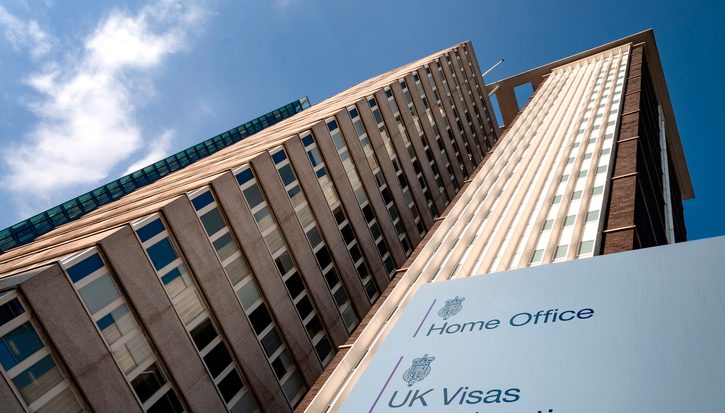Costing the Rwanda plan
Article
Total payments to Rwanda for removing this cohort of people could range between £1.1 billion and £3.9 billion.
As the safety of Rwanda bill continues its passage through parliament, the government has indicated that it plans to start sending asylum seekers to Rwanda by the spring. But buried among a flurry of immigration news in recent weeks was the publication of the National Audit Office’s investigation into the costs of the government’s Rwanda plan.
This investigation found that the costs of the UK-Rwanda migration partnership are even higher than many expected. Under the partnership, the UK is to make payments to Rwanda for two purposes: to support its economic growth (under the Economic Transformation and Integration Fund or ETIF) and to cover the actual costs of relocating people to Rwanda.
The ETIF payments involve fixed costs of £370 million, and a further £120 million once 300 people are relocated to Rwanda. There are also ETIF payments of £20,000 for each person relocated.
The actual relocation payments are even more significant. For each person relocated, the UK is to pay up to £150,874 to cover the costs of asylum processing and integration, spread over five years, plus up to £500 for healthcare.

The precise costs will vary depending on how many people relocated to Rwanda leave voluntarily – for each person who leaves, the UK is expected to contribute £10,000 to facilitate their departure but otherwise stops their ongoing payments. The NAO report states that the Home Office’s ‘working assumption’ is that around 10 per cent of people will choose to leave Rwanda, but this may be a significant underestimate: evidence from a previous Israeli deal to send Eritrean and Sudanese people to Rwanda suggested that most left the country almost immediately after they arrived.
If the Rwanda plan gets off the ground and the legal issues are circumvented, the costs of the scheme could escalate quickly.
If the Rwanda plan gets off the ground and the legal issues are circumvented, the costs of the scheme could escalate quickly. If and when the Illegal Migration Act is implemented in full, the home secretary will be obliged to remove all people arriving irregularly after 20 July 2023. A small share can be removed to their home country if it is deemed safe (including EU/EEA countries, Switzerland, Albania, India and Georgia); for the others, if they claim asylum the only option on the table at the moment is removal to Rwanda.(i)
While there are no figures yet on exactly how many people will fall under this category, we estimate based on Home Office figures that around 20,000 people arrived irregularly between July and December 2023 (excluding people from the safe countries listed above). This is likely a conservative estimate, as it only includes detected arrivals and does not include people arriving since the start of 2024.(ii)
The government justifies the value for money of this policy by claiming it will have a strong deterrent effect
We have then made a rough calculation of the total costs of removing this cohort. Our estimate is based on a range of possible departure rates – ie the proportion of people each quarter who voluntarily depart Rwanda (see chart below). Based on these figures, total payments to Rwanda for removing this cohort would range between £1.1 billion and £3.9 billion. A reasonable lower bound is a quarterly departure rate of around 0.5 per cent, which equates roughly to 10 per cent departing over a 5-year period, in line with the Home Office’s working assumption – this would mean total Rwanda payments of £3.8bn. On the other hand, a reasonable upper bound departure rate is 75 per cent, which would mean total payments of £1.2bn. Notably, even if all people relocated to Rwanda were to depart immediately (the 100 per cent departure rate scenario), total payments to Rwanda would still be over £1 billion.
These figures relate to people who have arrived here already; costs will increase further in relation to new arrivals. To put this in perspective, the total costs of the asylum system in 2022/23 were just under £4 billion.
Payments to Rwanda for relocating 20,000 irregular arrivals between July and December 2023
| Departure rate (% of people departing each quarter) | Total payments to Rwanda (£bn) |
|---|---|
| 0% | 3.9 |
| 0.5% | 3.8 |
| 2.5% | 3.4 |
| 10% | 2.5 |
| 50% | 1.3 |
| 75% | 1.2 |
| 100% | 1.1 |
Source: IPPR analysis of NAO and Home Office data.
Note: figures include both ETIF and operational per payment payments, voluntary departure payments, as well as initial ETIF fixed payments.
And of course this figure only relates to direct payments to Rwanda. There are also a range of other operational costs for the Home Office: those racked up so far include £2 million for staffing (with a further annual figure of £1 million from 2024/25), £2.3 million in legal costs, and £15.3 million in set-up escorting costs.
It therefore seems sensible to revisit the economic impact assessment of the illegal migration bill published in June 2023. This impact assessment put ‘third country costs’ (ie payments to Rwanda) at £105,000. Plugging in the new numbers to the impact assessment calculations, we get an average ‘per individual’ relocation cost ranging from around £96,000 (assuming a departure rate of 75 per cent) up to around £228,000 (assuming a departure rate of 0.5 per cent), compared to £169,000 in the original document.(iii)
At the same time, the savings in the original impact assessment of reduced asylum support (approx £106,000 per person) are clearly an overestimate. This assumed a four-year wait for someone’s asylum claim to be processed and appeals to be heard. Given the significant increase in decision-maker capacity over the past year or so, this seems excessive. Reducing this down to one–three years, the per person figure is a more realistic £26–79,000 – far less than the per person relocation costs discussed above. For the purposes of this exercise, we assume a per person figure of £53,000, based on a two-year wait.

The government justifies the value for money of this policy by claiming it will have a strong deterrent effect: if individuals are deterred from arriving irregularly, then that will mean there are savings on accommodation for those people who would otherwise have come, without any costs in sending them to Rwanda.
The latest figures from the NAO therefore expose how exceptionally poor value for money the Rwanda scheme is
The 2023 impact assessment estimated that the ‘break-even’ point for the policy would be a 37 per cent level of deterrence (ie 37 per cent of irregular arrivals would have to be deterred from coming for the policy to break even). This is an illustrative exercise which only takes into account some of the costs involved, but it is designed to highlight the role of deterrence in impacting the government’s cost-benefit analysis. Based on our new figures, the ‘break-even’ point would require a 45–77 per cent level of deterrence (depending on the Rwanda departure rate) – significantly higher than originally estimated.
The latest figures from the NAO therefore expose – aside from the ethical, legal and practical objections – how exceptionally poor value for money the Rwanda scheme is. For it to be cost-effective, it will need to show a strong deterrent effect – and there is little to no evidence this will be the case. Moreover, the scheme will likely cost billions to remove people who are already here, assuming the government does not change the date from which the ‘duty to remove’ applies. The only winner from this scheme appears to be the Rwandan government itself, which has secured hundreds of millions without doing much at all.
Many thanks to Jamie O'Halloran and Peter Walsh for their invaluable feedback on earlier drafts of this analysis.
Notes
(i) Under the Illegal Migration Act, if individuals subject to the duty to remove make an asylum or human rights claim, they can only be returned home if they are from designated safe countries (EU/EEA states, Switzerland and Albania). India and Georgia are expected to be added to this list shortly.
(ii) This is the best available estimate of the number of irregular arrivals since the Illegal Migration Act received royal assent. However, there are some limitations. The estimate covers from the start of July, rather than July 20, so will include some people who arrived before royal assent. It does not include more recent arrivals from January 2024 onwards. Only detected irregular arrivals are included (the bulk being small boat arrivals). We also assume that irregular arrivals claim asylum and so cannot be returned to their country of origin outside the designated safe list. Unaccompanied children are included in the estimate because, while they are not subject to the duty to remove immediately, they are nevertheless deemed inadmissible to the asylum system and the duty to remove kicks in when they turn 18.
(iii) These figures include ‘third country’ costs (payments to Rwanda), Home Office resource costs, flight and escorting costs, detention costs, and legal aid costs.
Related items

The asylum backlog: Job done?
This blog post sets out how the department must now grapple with a new set of backlog challenges.
Marley Morris on BBC Scotland discussing the Rwanda ruling

Charting new waters: A progressive policy response to the Channel crossings
This report outlines the concrete steps which the government can take to mount a progressive and pragmatic response to the Channel crossings.